
Tennoji Miyako Hotel Osaka
Bonson LamIn the midst of the modern face of Tennoji is Miyako Hotel, part of the Miyako group which has sister hotels in the parklands of Kyoto and Tokyo.

Hanazono Central Park, on the north side of Higashi-Hanazono Station in Osaka, has a cherry blossom-filled plaza and iris covered pond, as well as a range of facilities for sports and cultural activities. True to the name hanazono (" "Flower Garden" ") you can enjoy seasonal flowers all year round.
The children's culture and sports center Dream 21 houses an interactive exhibition in which children can learn everything about the formation of the earth up to the state of modern science. There is also a planetarium and a sports hall.
Local artists are also exhibited, as well as special exhibitions and small concerts. Fountains, dog parks and monuments complete the concept of Hanazono Central Park.
Follow Scrum Road for 800m once you leave Higashi Hanazono Station on the Kintetsu Nara Line.

In the midst of the modern face of Tennoji is Miyako Hotel, part of the Miyako group which has sister hotels in the parklands of Kyoto and Tokyo.
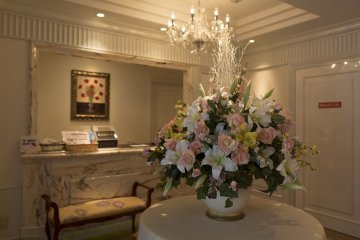
Peace and quiet is what makes the perfect hotel for some. If this is an important trait for you then opting for an adults only hotel may be something you’d like to consider.

Naniwa Tomoare is known for its duck ranch called Tsumura Honten. The Aigamo meat is tender and tasty, and was given a brand name of Kawachi Duck.

Not to be confused with Hiro Sakai in Frankfurt, this family-sized eatery's full name is Te uchi soba hiro, or Hiro's hand-made soba, the star of Sakai in Osaka.
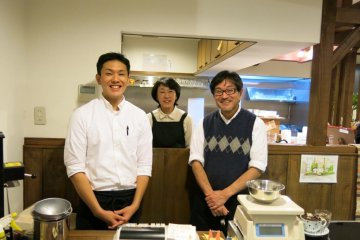
Dear Cup, a family owned Cafe in Sakai that offers a wide assortment of coffees and foods.
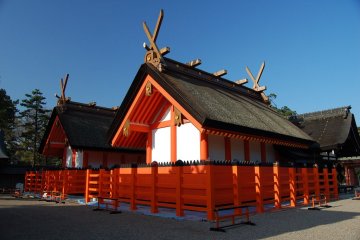
Sumiyoshi Taisha, also known as Sumiyoshi Grand Shrine, is one of the most famous shrines in Osaka and one of the oldest in Japan. During hatsumode, the first shrine visit of the new year, over two million people visit this unique shrine. The shrine grounds are a picture of tranquility with vermillion shrine buildings, natural beauty, and glimmering water. History Sumiyoshi Taisha is cited in two of Japan’s oldest books, the Kojiki and the Nihon Shoki, as well as one of the world’s oldest stories, Tale of Genji. Legend has it that Sumiyoshi Taisha was founded in 211 CE by Empress Jingu who dedicated it to the Sumiyoshi Sanjin, which is a collective name for the three Shinto gods of the sea and later, waka poetry. Although landlocked now, the shrine used to overlook the ocean. Later, Empress Jingu was also enshrined on the grounds. This act linked the shrine to her son, Emperor Ojin, who was deified as Hachiman, god of war. With the enshrinement of various kami (gods), the shrine is a popular place to pray for a variety of reasons, including safe seas, travel, poetry, fighting (such as martial arts), military, and general health and prosperity. Sumiyoshi Taisha is the head shrine of over two thousand Sumiyoshi shrines across Japan. One-of-a-kind architecture Interestingly, Sumiyoshi Taisha was founded before the introduction of Buddhism in Japan, giving it a unique architectural style called Sumiyoshi-zukuri, which is free of influence from the Asian mainland. This purely Japanese style is registered as a national treasure and characterized by straight roofs, rather than curved ones, decorated with forked finials that resemble crossed poles, and five horizontal billets. The shrine’s four main halls are painted vermillion and surrounded by fences. Explore the shrine Sumiyoshi Taisha is home to dozens of shrine buildings, which are complemented by torii gates, rich nature, and stone lanterns. Stroll through the sacred grounds and allow the peaceful energy to rejuvenate your mind and body.
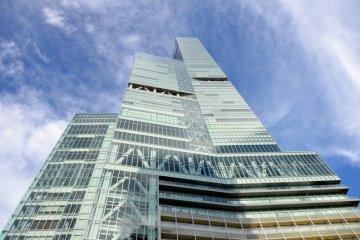
The Abenobashi Terminal Building is located in Abenosuji Itchome, Osaka City. The building is a commercially used multifunctional building and not only houses numerous shops, but also a hotel and the Sharp Cooporation's sales office. The name of the skyscraper is Abeno Harukas, which is derived from the old Japanese word Harukatsu and means to brighten or clear. Construction of the building began in 2010 and it opened on March 7, 2014. With a height of 300 meters and 62 floors, the Abenobashi Terminal building is the tallest skyscraper in Japan and when all floors are taken together it has a walkable area of approximately 100,000 square meters.
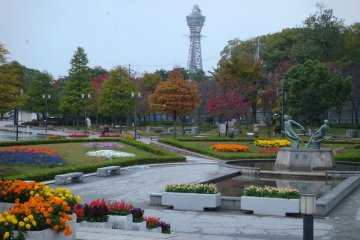
Tenshiba is the entrance area to Tennoji Park, which was converted into a free recreation area for the people of Osaka in October 2015. It is laid out around an extensive lawn and surrounded by a variety of recreational facilities for the local population. In the shopping area there is Cafes, restaurants and a farmers market, and there is also a children's playground and a futsal court. There is also an animal park nearby, the Tennoji Zoo. In 2016, the redesigned park won one of Japan's annual Good Design Awards. Entrance is completely free and a free WiFi network is also offered to visitors.